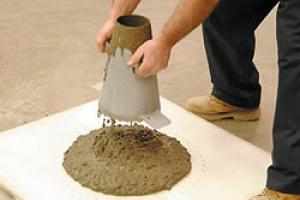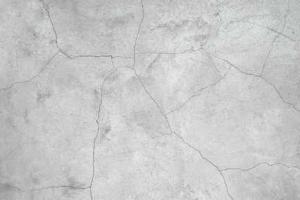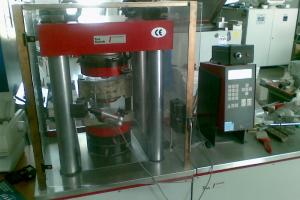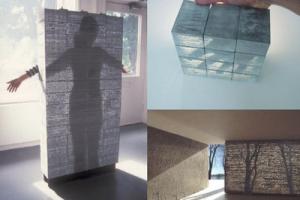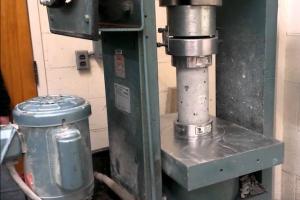Concrete Basics - Properties, Concepts and Composition
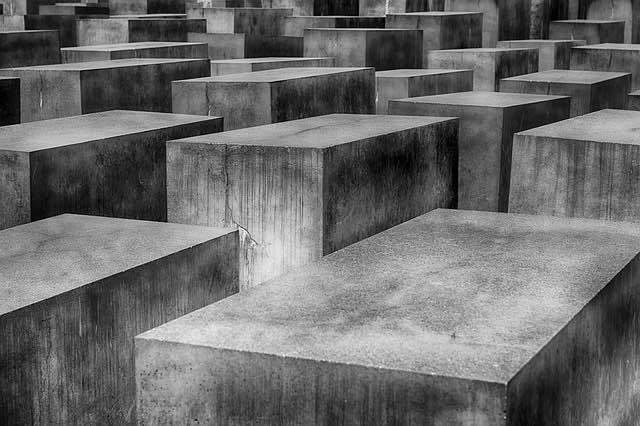
Concrete is made by mixing: Cement, water, course fine aggregates and admixtures (if required). The aim is to mix these materials in measured amounts to make concrete that is easy to: Transport, place, compact, finish and which will set, and harden, to give a strong and durable product. The amount of each material (i.e. cement, water and aggregates) affects the properties of hardened concrete.
Proportioning and mixing concrete
A concrete mix is designed to produce concrete that can be easily placed at the lowest cost. The concrete must be workable and cohesive when plastic, then set and harden to give strong and durable concrete. The mix design must consider the environment that the concrete will be in; i.e. exposure to sea water, trucks, cars, forklifts, foot traffic or extremes of hot and cold. PROPORTIONING Concrete is a mixture of Cement, Water, Coarse and Fine Aggregates and Admixtures. The proportions of each material in the mixture affects the properties of the final hardened concrete. These proportions are best measured by weight. Measurement by volume is not as accurate, but is suitable for minor projects.
CEMENT CONTENT As the cement content increases, so does strength and durability. Therefore to increase the strength, increase the cement content of a mix. WATER
CONTENT Adding MORE WATER to a mix gives a WEAKER hardened concrete. Always use as little water as possible, only enough to make the mix workable.
WATER TO CEMENT RATIO As the Water to Cement ratio INCREASES, the strength and durability of hardened concrete DECREASES. To increase the strength and durability of concrete, decrease the Water-Cement ratio.
AGGREGATES Too much fine aggregate gives a sticky mix. Too much coarse aggregate gives a harsh or boney mix.
MIXING Concrete must be mixed so the Cement, Water, Aggregates and Admixtures blend into an even mix. Concrete is normally mixed by MACHINE. Machine mixing can be done on-site or be a Pre-Mixed concrete company. Pre-Mixed concrete is batched (proportioned) at the plant to the job requirements. Truck Mixing The materials are normally added to the trucks at batching plants and mixed for required time and speed at the plant. The trucks drum continues to rotate to agitate the concrete as it is delivered to the site. Site Mixing When site mixing begin by loading a MEASURED AMOUNT of coarse aggregate into the mixer drum. Add the sand before the cement, both in measured amounts.
NEVER USE A SHOVEL AS A MEASURE AS VOLUMES CAN VARY WIDELY
Mix materials together until there is no visible sand in the mix. Add enough water to get a workable mix. Be careful not to overload the mixer. Too much concrete in the mixer means each batch takes longer to be properly mixed, which causes costly delays in the long run or it will not mix at all. Always check how much the mixer holds so you know how much concrete can be produced at once. Avoid delays between batches to get maximum output. Small quantities of concrete may be mixed by hand with a shovel. Mixing should be done on a clean board, or plate, or in a wheelbarrow. Mix the materials together until they are even. Then dish the material and add water. Use only enough water to get an even, workable mix.
Desired properties of concrete
The concrete mix should be workable, so that it can be placed and consolidated properly by the workmen.
Hardness, cohesiveness and strength: Concrete must be resistant to freezing, thawing, water tight( non permeable), wear resistance, and strength.
Economy: Since the quality mainly depends on the w/c ratio, the water requirement should be minimized to reduce the cement requirement and hence cost.
Curing
Because the cement requires time to fully hydrate before it acquires strength and hardness, concrete must be cured once it has been placed and achieved initial setting. Curing is the process of keeping concrete under a specific environmental condition until hydration is relatively complete. Good curing is typically considered to provide a moist environment and control temperature. A moist environment promotes hydration, since increased hydration lowers permeability and increases strength resulting in a higher quality material. Allowing the concrete surface to dry out excessively can result in tensile stresses, which the still-hydrating interior cannot withstand, causing the concrete to crack.
Also, the amount of heat generated by the exothermic chemical process of hydration can be problematic for very large placements. Allowing the concrete to freeze in cold climates before the curing is complete will interrupt the hydration process, reducing the concrete strength and leading to scaling and other damage or failure. The effects of curing are primarily a function of geometry (the relation between exposed surface area and volume), the permeability of the concrete, curing time, and curing history. Improper curing can lead to several serviceability problems including cracking, increased scaling, and reduced abrasion resistance.



